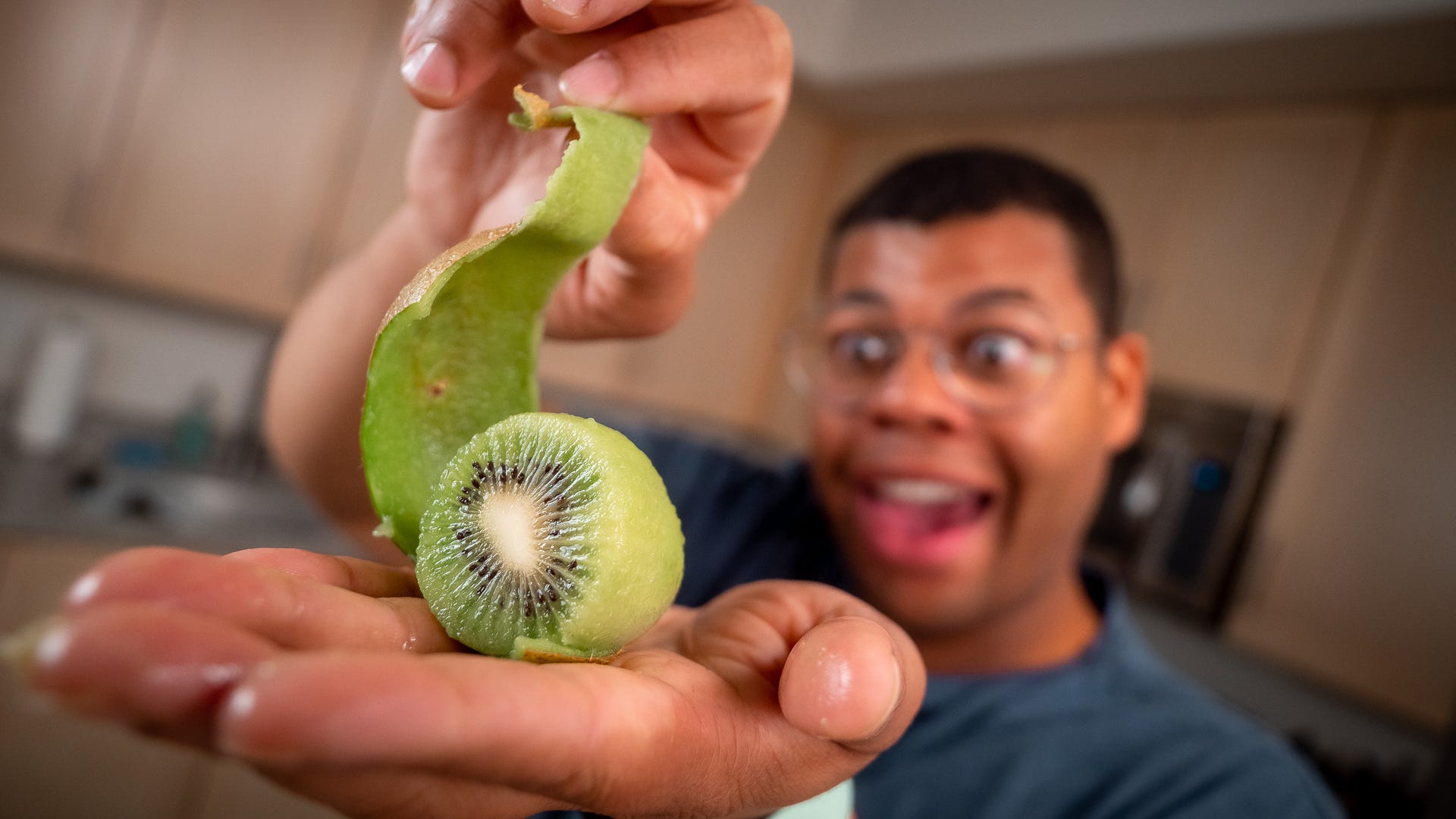
Expert reveals the fruits, rice and meats that can lower blood pressure
Hypertension can increase the risk of heart disease. Nutrition therapist Lauren Kelly has dietary suggestions that can help lower blood pressure.
Kiwis are a nutrient-dense fruit that research has shown to offer a number of health benefits, including boosting digestive, immune and metabolic health. But did you know that you’re leaving even more nutrients on the table?
You likely eat the soft, green insides of the kiwi fruit and peel off the brown outer layer that’s somehow both fuzzy and rough at the same time. You don’t have to, though.
“Kiwi skin might not be appetizing, but it’s definitely edible,” registered dietitian Miranda Galati tells USA TODAY. Is it worth it to brave chewing the strange texture of the outer layer of a kiwi? Here’s what nutrition experts say.
Can you eat the skin of a kiwi?
The short answer is yes, you can eat kiwi skin. Whether you want to is another question, but from a health perspective it’s definitely allowed — and sometimes even encouraged.
“Most Americans aren’t eating enough fiber, and eating kiwi skin is one way to combat that,” Galati says. “The skin of the kiwi is where much of its fiber is held — if you eat the whole kiwi with skin, you could increase the fiber content by almost half.”
The current Dietary Guidelines for Americans suggest consuming between 20 and 38 grams of fiber every day, depending on your age and sex. American adults are only averaging 10 to 15 grams per day, though, according to Harvard Health.
A 100-gram serving of peeled kiwi usually contains about 2.1 grams of fiber, per the U.S. Department of Agriculture’s food database. If you keep the skin on, that total spikes to about 3.5 grams of fiber. For comparison, other foods high in fiber include lima beans (9.2 grams per serving), black beans (7.5 grams), Brussels sprouts (6.4 grams), popcorn (5.8 grams) and pears (5.5 grams).

How to peel kiwi easily
Peelers are great, but it might not work for oddly-shaped fruits and vegetables.
ProblemSolved, Reviewed
Is kiwi skin hard to digest?
Aside from the texture, another common concern about eating kiwi skin is whether it’s difficult on your digestive system. But you don’t need to panic if you try a kiwi skin for the first time and feel some stomach discomfort, Galati says.
“Some people may notice uncomfortable digestive symptoms from eating kiwi skin like bloating or gas. But that’s not because of skin — it’s because of the increase in fiber,” Galati says. “Increasing fiber from any source may cause digestive upset as your body adjusts. The rule of thumb for eating more fiber is to go slow, make one change at a time and drink plenty of fluids. And be sure to wash the kiwi skin thoroughly since it may hold microbes or dirt.”
Source link
Tim Spector’s fermented food diet — and the new gut science
What Happens to Your Body When You Eat Almonds Every Day
Why You Feel Bloated After Healthy Meals And How To Fix It | Health and Fitness News